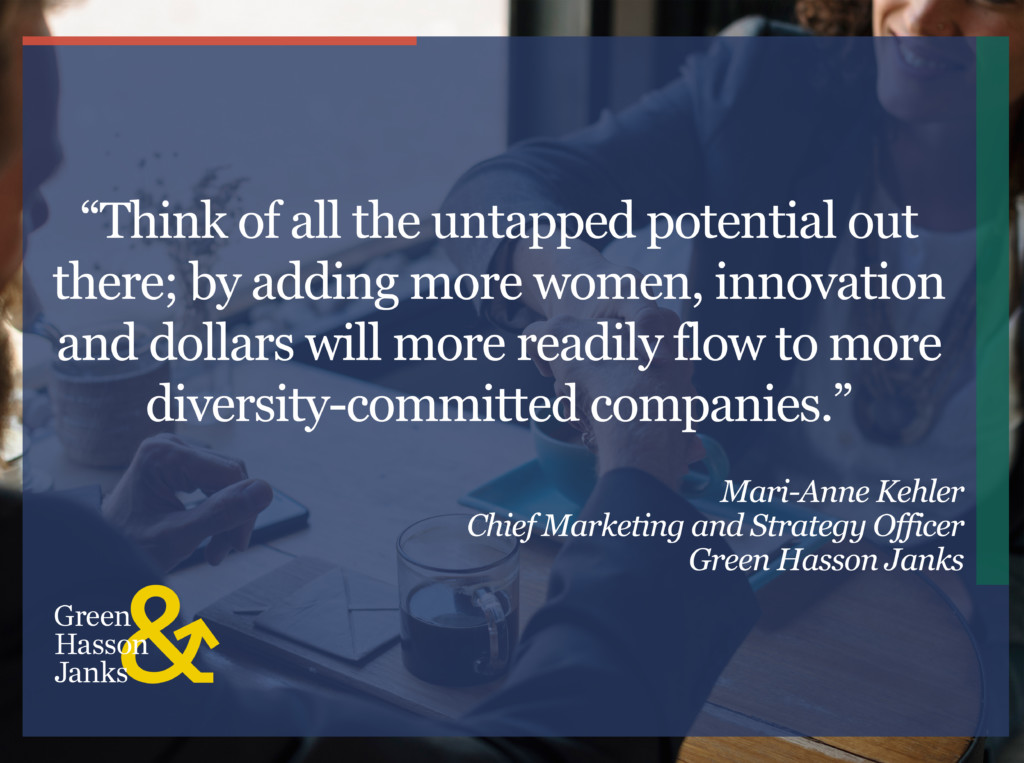
Change management is one of the toughest jobs a leader will encounter. To implement successful and sustainable change requires having a plan, effectively engaging your audience and measuring impact. But before any of that occurs, you need a business case. A business needs to answer questions, like: Why are we embarking on this initiative? What is the ROI? And what is in it for me?
These are often tough questions to answer. The journey to gender parity is no different. If we are to reach meaningful outcomes on diversity in the workplace, we need to understand why it matters, for whom and consider real measurable returns on the investment of time and resources.
But – you may be asking – isn’t diversity in the workplace just the right thing to do? Sure, but welcome to the real world of business decision making. To achieve sustainable change that leadership teams will continue to support and invest in, there needs to be a business case. Eliminating the gender gap would add $28 trillion to global GDP. Clear enough. “But what is in it for me?” corporate leaders ask. So here you go:
The War For Talent
If you have tried to find great talent for your team recently, you don’t need to be told how tough it is to source a great candidate. The most recent ManpowerGroup Talent Shortage Survey found that 40 percent of employers are having difficulty filling jobs. What is surprising is that so few employers have tapped into effective strategies to attract, delight and retain talented women. According to a McKinsey & Company recent report, “a mere 7 percent of the companies in our sample ranked diversity among the top three priorities on their strategic agenda.” Yet, what is proven is that companies with a diverse culture attract talent more easily from today’s diverse hiring pool.
Women make up about half the workforce; earn 57 percent of bachelors, 58 percent of masters and 46 percent of doctoral degrees. Women make up half the hiring pool, and yet the numbers of women who are championed up the pipeline to leadership drop off dramatically. Why does this matter? Many reasons. Essentially, diversity + inclusion = better business outcomes. One example is that companies with more inclusive cultures have experienced lower turnover – which significantly improves direct and indirect costs to the company. Gallup has compelling evidence that there are links to productivity, quality, employee commitment and retention.
Your Clients and Buyers Care
At GHJ, more than half our people are women, and we have an ethnically diverse workforce. Do our clients care? You betcha. We serve many clients with women CFOs, CEOs and board members. Our nonprofit sector in particular does a great job selecting their service providers in part based on diverse cultural commitments. Having a diverse culture that mirrors your markets matters. Buyers want to know you have diversity of thought among your teams.
I recall working for a large global firm and coaching the team to pitch a very large healthcare client. Regrettably, they ignored the fact our pursuit team was made up of all males, and the decision makers from the prospect were majority women. Guess who didn’t get that client?
Innovation
“Hiring individuals who do not look, talk, or think like you can allow you to dodge the costly pitfalls of conformity, which discourages innovative thinking.” (HBR)
Simply stated, diverse perspectives stimulate innovation. When teams are made up of homogenous members, it’s more difficult to generate new ideas. Pax World Funds reports, “firms with more gender-diverse boards achieved greater innovative success.” And specific to research and development teams, “radical innovation increased significantly when the R&D team was more gender diverse.”
The flip side to innovation is risk: why risk stagnation and competitive disadvantage when it’s clear diversity will provide increased growth and sustainability? The case for gender equity gets stronger.
Business Results
And here we come to the bottom line. Revenue. Ironically, this is the easiest case to make for gender parity. Scientific America found that companies not only excel in innovation and creativity when they have inclusive cultures. They also see an increase in bottom line results. Catalyst research has revealed that companies with more women in leadership positions in fact have 34 percent greater return to shareholders than those who do not.
In addition, more women on boards translate to lower debt and quicker rebounds in a crisis, according to McKinsey. Unfortunately only 16 percent of Fortune 500 boards and C-level roles are women. Think of all the untapped potential out there; by adding more women, innovation and dollars will more readily flow to more diversity-committed companies.
What You Can Do
So what is in it for you? Why encourage, promote and implement gender equity within your company? The easy answer: results. It is almost certain if you aren’t prioritizing a diverse workforce in your organization, you are leaving money on the table.
“Of the 2,200 employees we surveyed, more than 88 percent said they do not believe their company is doing what it takes to improve gender diversity, and 62 percent of them do not know how to contribute to gender diversity.” (McKinsey)
What can you do? Turns out, there are answers to that, based on what best-in-class companies are doing. Three things:
- Persistently pursue diversity. Start now. Implement sustainable programs.
- Support starts at the top. CEO commitment and management engagement are imperative.
- Embed diversity throughout the organization’s culture and values.
At GHJ, we knew a “new normal” was needed for everyone, not just our women, to thrive in their careers. Creating a flexible anytime/anywhere work culture was something every employee embraced. But if we didn’t include a pathway that made top career roles compatible with work-life balance, women could never reach the heights they earned and deserve. Our #BeMore culture is a win-win: we increase our talent pool, men and women enjoy a flexible schedule and the result is greater engagement and business outcomes. Best of all, our clients benefit by having the highest talent teams.


